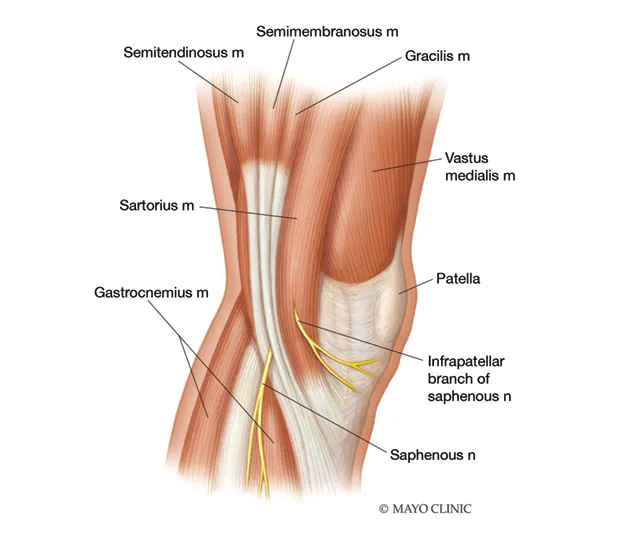Chronic Knee Pain
Over 450,000 knee replacements are performed each year and approximately 25,000 of these patients continue to have pain. The cause is likely a small irritated nerve.
If the orthopedic surgeon has ruled out infection or loosening of the artificial knee, then there is a high likelihood that your pain is due to a nerve issue.
Nerves act like electrical wires, sending signals to the muscles to move and bringing feelings back to the brain from the skin. Several nerves provide sensation around the knee. Stretching during surgery or scarring may cause irritation or entrapment of these nerves, which results in significant chronic pain. With a simple physical exam and possibly a local anesthetic shot, physicians at Neuropax Clinic can easily determine if one or more of these nerves are injured and are responsible for causing your pain.
The shot, also known as “a nerve block”, is a simple test that is quick, nearly painless to go through, and can be done during an office visit. Doctors Brown and Hagan are experts at knowing the location of these nerves, and using ultrasound to direct the local anesthetic directly to them. If the injection is successful in relieving the pain for a few hours (the duration of the anesthetic), then the diagnosis is made, and the surgeon may recommend a straight- forward outpatient operation that can make the pain relief permanent.

A successful nerve block – one that relieves the pain for a few hours – proves three things: that your pain is due to an injured nerve, which nerve is injured, and where on the nerve the injury is located. This gives the surgeon the information needed to make the pain relief permanent. We have not reached the point of being able to “fix” the injured nerve. Instead, we disconnect the injured portion of the nerve so that it is no longer able to send pain signals to the brain. This operation is usually performed as an outpatient – you will go home the same day! The trade-off is a small area of numbness on the skin in place of the pain. Most people welcome this trade. The operation can be 80 – 90% successful in significantly reducing or alleviating your pain. The surgery will not cause you to lose any motor function (these are sensory nerves only). You will be able to use your knee immediately afterword.
The main treatment for severe pain from arthritis of the knee joint is artificial knee replacement surgery. However, some patients may not be good candidates for this type of surgery due to health concerns which prevent the operation or make rehabilitation afterward problematic. In such cases, peripheral nerve surgery techniques may be helpful in relieving the pain! Doctors Brown and Hagan use the same techniques for interrupting the signals of pain in the knee from reaching the brain in these cases. While this does not treat the underlying arthritis itself, it can be very successful in keeping the patient from feeling the pain caused by it. Talk with the surgeons at Neuropax Clinic to see if you are a candidate for nerve resection to treat your knee arthritis pain!
- Chronic Neuropathic Knee Pain Treated with Peripheral Nerve Operations Combined with Regenerative Peripheral Nerve Interfaces. Cinotto G, Hamill JB, Cederna PS, Kemp SWP, Brown DL: Plastic and Reconstructive Surgery. Knee Pain
- Lower Extremity Contemporary Neuroma Management, Felder JM, Ko JH, Brown DL: Eberlein, Ed.; Springer, 2023.
Nerve Surgery Helps Relieve Chronic Pain
The majority of patients with chronic pain report significant decreases or complete resolution of their pain following nerve surgery. Most patients describe the ‘nerve pain feelings’ are improved as soon as the following day. Discomfort from the operation is frequently described as a completely different sensation, which subsides in the next few weeks.